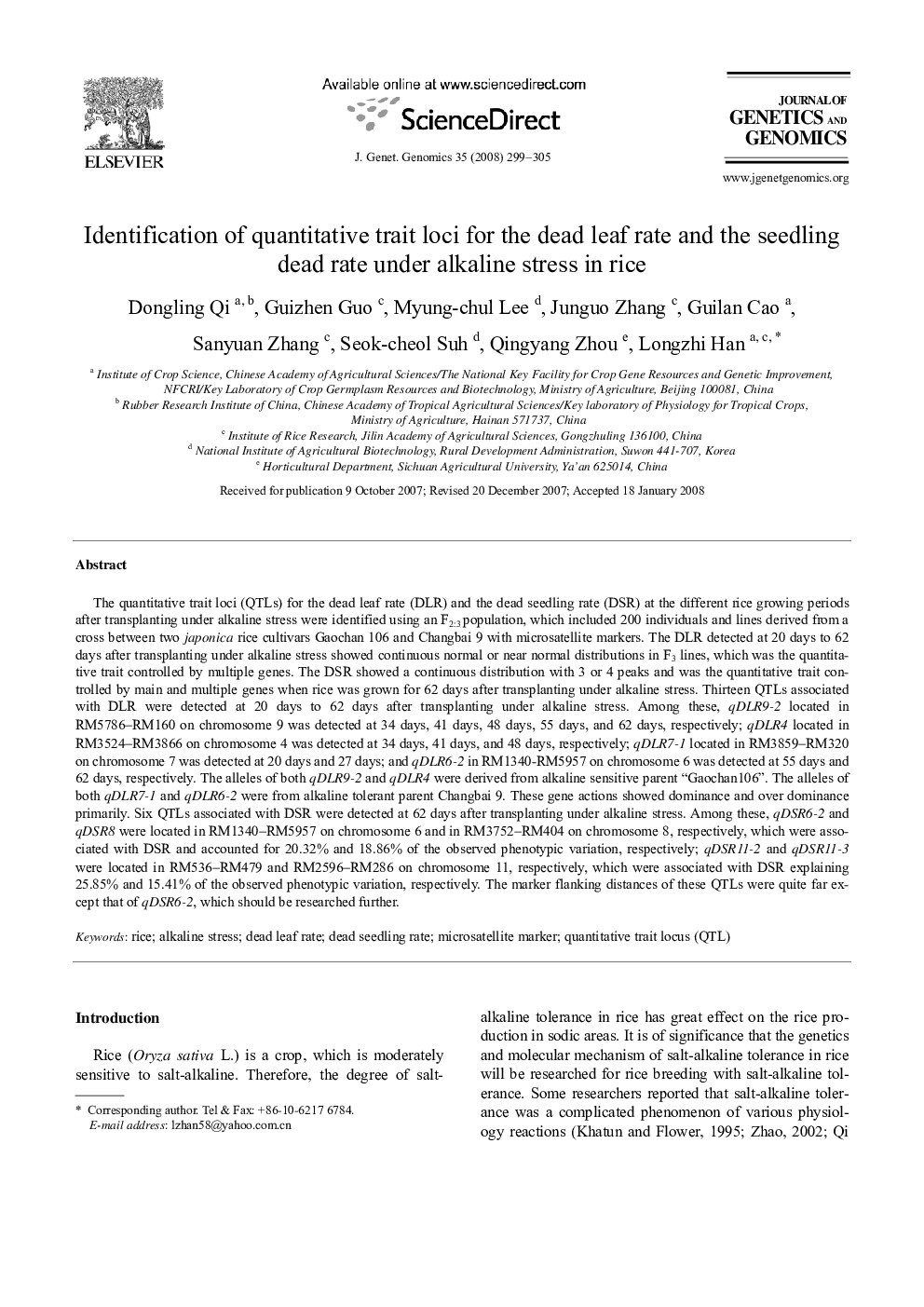| Article ID | Journal | Published Year | Pages | File Type |
|---|---|---|---|---|
| 2788116 | Journal of Genetics and Genomics | 2008 | 7 Pages |
The quantitative trait loci (QTLs) for the dead leaf rate (DLR) and the dead seedling rate (DSR) at the different rice growing periods after transplanting under alkaline stress were identified using an F2:3 population, which included 200 individuals and lines derived from a cross between two japonica rice cultivars Gaochan 106 and Changbai 9 with microsatellite markers. The DLR detected at 20 days to 62 days after transplanting under alkaline stress showed continuous normal or near normal distributions in F3 lines, which was the quantitative trait controlled by multiple genes. The DSR showed a continuous distribution with 3 or 4 peaks and was the quantitative trait controlled by main and multiple genes when rice was grown for 62 days after transplanting under alkaline stress. Thirteen QTLs associated with DLR were detected at 20 days to 62 days after transplanting under alkaline stress. Among these, qDLR9-2 located in RM5786-RM160 on chromosome 9 was detected at 34 days, 41 days, 48 days, 55 days, and 62 days, respectively; qDLR4 located in RM3524-RM3866 on chromosome 4 was detected at 34 days, 41 days, and 48 days, respectively; qDLR7-1 located in RM3859-RM320 on chromosome 7 was detected at 20 days and 27 days; and qDLR6-2 in RM1340-RM5957 on chromosome 6 was detected at 55 days and 62 days, respectively. The alleles of both qDLR9-2 and qDLR4 were derived from alkaline sensitive parent “Gaochan106”. The alleles of both qDLR7-1 and qDLR6-2 were from alkaline tolerant parent Changbai 9. These gene actions showed dominance and over dominance primarily. Six QTLs associated with DSR were detected at 62 days after transplanting under alkaline stress. Among these, qDSR6-2 and qDSR8 were located in RM1340-RM5957 on chromosome 6 and in RM3752-RM404 on chromosome 8, respectively, which were associated with DSR and accounted for 20.32% and 18.86% of the observed phenotypic variation, respectively; qDSR11-2 and qDSR11-3 were located in RM536-RM479 and RM2596-RM286 on chromosome 11, respectively, which were associated with DSR explaining 25.85% and 15.41% of the observed phenotypic variation, respectively. The marker flanking distances of these QTLs were quite far except that of qDSR6-2, which should be researched further.
